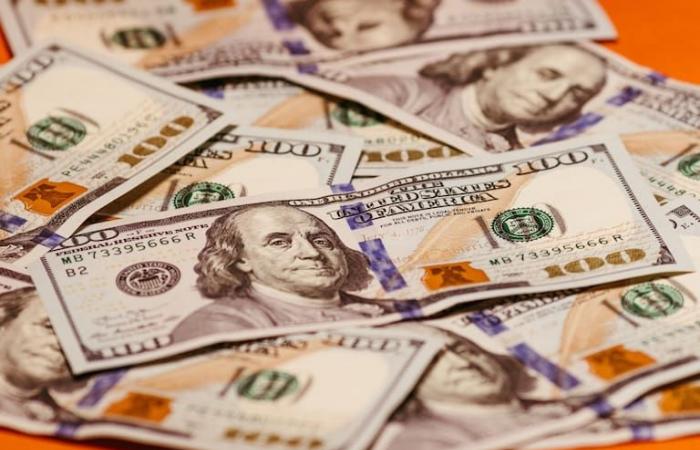Hear
After months of calm, in June some alerts were raised about the dynamics of the Central Bank (BCRA) reserves. Even though the field is in full harvest, the monetary authority is having a hard time obtaining foreign currency and has accumulated purchases of just US$25 million so far this month. This postcard contrasts with the first months of Javier Milei’s government, when greenbacks entered the monetary entity’s coffers daily, and leaves doubt among analysts about How could this panorama affect the exit from the exchange stocks? facing the third quarter of the year.
Yesterday, the Central Bank had to part with US$156 million, which meant the largest sale of reserves in the Milei era. It was a strange week for the market, since there are three local holidays and one international holiday (yesterday in the United States) that ended up affecting the market, and caused the Government to close the week with a negative balance of US$74 million.
In the cumulative figure for the month, the number is still positive, at US$25 million. But, for comparison, as of May 20, the BCRA had accumulated US$1,983 million. “These are unexpected values for this time of year, when it was assumed that the arrival of the thick harvest would allow the diminished stock of reserves to be restored,” said Melisa Sala, an economist at LCG.
For Gustavo Quintana, operator of Cambios PR, June was affected by increased demand. First of all, because it was felt import payment that were made at the end of last year and the beginning of this year, in which cancellations of 180 days were authorized. Second, because there were more payment of energy and fuel imports due to seasonal factors, due to greater internal consumption.
“Some exporters were also encouraged to withhold their liquidations due to political tension factors, which dissipated after the result obtained in the Senate with the Bases Law, although the review by Deputies remains. In turn, rumors of completion of blend 80/20 (exporters can settle 20% at the settlement exchange rate and 80% at the official exchange rate) and a probable adjustment in the official wholesale exchange rate,” he concluded.
This Monday, the staff report of the International Monetary Fund (IMF) noted that The export increase program would end at the end of June. However, government authorities publicly denied it, to try to clear up uncertainty in the export sector. Although they added that the end of the dollar blend It is on the agenda, they did not put a date on the calendar, and they stated that the wholesale exchange rate will continue to move at 2% monthly.
“When analyzing business days, agricultural settlements come at levels similar to those of May. Therefore, we must look at what is happening with demand, where we see greater needs for energy payments and that four import quotas have accumulated. This creates a tighter exchange market, which is likely to last. And it implies that the balance of the Central exchange intervention tends to be lower, more volatile; sometimes negative, sometimes positive. It should not only affect June, but also July, when energy imports will remain strong and liquidations are likely to decline somewhat. And in August, agriculture will settle even less. More demanding months are coming,” agreed Gabriel Caamaño, director of the consulting firm Ledesma.
In addition, according to the economist, months of expiration dates are also approaching. The Government will have to pay US$645 million to the Fund. In July it will have to disburse around US$1.5 billion for Bonares and Globales maturities. And in July you will have the first installment (the second in August) of the cancellation of the Bopreal Series 2, for about US$170 million. ““All this will make the accumulation of reserves more difficult, if there is not a redefinition of the scheme that implies an exit from the exchange rate.”complete.
These data contrast with the purchasing dynamics that the Central Bank had in the first six months of the La Libertad Avanza government. At the moment, Since last December 10, they managed to obtain US$17,271 million to rebuild net reserves, which Alberto Fernández’s administration had left in negative territory. Building this cushion of greenbacks is important for the Government, in order to face the path of eliminating exchange restrictions, one of the great campaign promises.
“Some of the reserve accumulation was genuine: change in relative prices (devaluation), together with absence of drought. Another no less minor part of the accumulation process was determined by more circumstantial factors, which There are doubts about the sustainability of this process for the coming months: access to dollars for imports in installments, the collapse of imports as a result of the marked recession, the increase in the PAIS tax and the non-payment of liabilities in dollars of the BCRA originated in the previous administration,” warned the LCG economist.
For the next seven months, If the financing needs, the cancellation of the floating debt with importers, the dynamics of exports (20% outside the official market) and a balance in the other components of the balance of payments are taken into account, the economic consultancy calculates that The BCRA could have a balance of just US$25,000 million for the payment of imports to maintain constant reserves.
This is a “too low” level, he added, which would only be achievable if activity collapsed or the dollar rose. “It would involve authorizing payments at a rate of US$3,500 million per month, even lower than the US$3.2 billion authorized in April,” he compared.
Analysts from Portfolio Personal de Inversiones (PPI) pointed out in the same sense, who pointed out that the dynamics of the sale of reserves that the Central Bank had in recent days “predicts a worrying outlook” for the third quarter if the stocks remain in place. If the Government does not eliminate exchange restrictions before the purchase of foreign currency becomes difficult, the path could become even more complicated.
“Instead, farm dollars could appear with the right incentives. Maybe a bigger spread rate-crawling that makes leverage more expensive and a smaller gap, or Even an eventual exit from the stocks could mitigate the typical deaccumulation of reserves in the third quarter”they closed.






